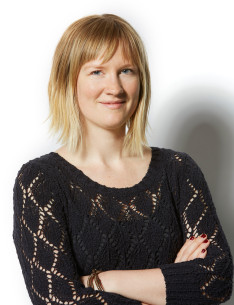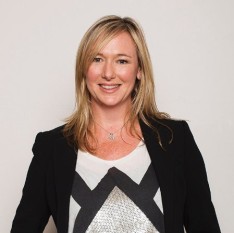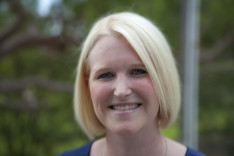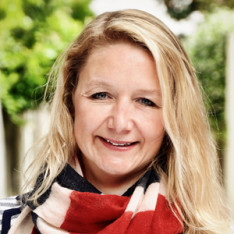The Mad Men industry: Where are all the women?
 With new figures showing women make up just a quarter of the creatives in agencies Miranda Ward speaks to some present and past female leaders about whether it is a problem, and what can be done.
With new figures showing women make up just a quarter of the creatives in agencies Miranda Ward speaks to some present and past female leaders about whether it is a problem, and what can be done.
At the AWARD Awards in March chairman Mark Harricks acknowledged the shocking statistic that women represent less than 10 per cent of the advertising industry, sensing the need to implement genuine change to rectify the problem. While many attendees clapped his sentiment, a small pocket of men enjoying the open bar and having a good time decided it was a good time for a laugh with cheering when Harricks mentioned the statistic.
As Harricks himself said, it is a problem that seems to occur within and outside of the industry when too many men are together.
“Blokes can be like pack wolves, get a bunch of them together and they get jokey jokey and blokey blokey,” he said.
“You pull them aside and talk to them individually and there’s no way they’d say that to a woman or in a serious situation but when they’re all together it’s kind of funny to take the piss out of it all.
“That sort of behaviour in that environment does undermine it all.”
With men nine times more like to make it to senior executive ranks than women in large corporations, according to the Australian Bureau of Statistics April 2012 data the advertising industry is not alone. But is it just part of the culture of the industry, or is it indicative of a darker problem or is the demands of the job that are turning women off?
Host CEO Suzie Shaw is adamant women are not being discriminated against.
“I don’t think any creative directors would deliberately not hire a good female candidate, or deliberately not take on a good idea just because it happened to come from a woman. All they want is good ideas, and they don’t care where they come from,” she said.
“The issue is that there just aren’t a sufficient number of women looking to go into creative departments. I suspect it’s a role that’s seen as a bit more high-risk in terms of its level of stability, and women in general seem less attracted to riskier jobs.”
Marianne Harvey, Clemenger BBDO Brisbane creative director is in agreement, saying being a female CD gave her an edge.
“Because there weren’t many female creatives, if you were a good creative that was a female it made you a little more unique, you were a little bit sought after if you made it through,” she said.
“Companies are open to having more females in the creative department, over the years there just hasn’t been as many wanting to get into it.
“I’ve never had a problem in being in creative departments working with predominantly men,” she added. “Honestly, I haven’t experienced any direct sexim and I’ve worked for both male and female creative directors over the years.”
“The female creative directors are more open to hiring females.”
Katie McCarthy, who recently joined Naked Sydney after spending her career working in the US, echoes Harvey’s sentiment.
“I haven’t experienced sexism, in fact, I’ve found it to be an asset to be a woman in advertising. Because there are less women, there’s an opportunity to give a unique perspective that’s much needed.”
Currently females only represent 29.9 per cent of those employed in creative departments in the Australian ad industry, according to research conducted by Mumbrella.
“Generally the number of women in creative departments is low- around 30 per cent of total creative headcount. This has been the case in every agency, in every continent I’ve worked,” a respondent to the survey said.
The respondent continued: “However this is more than made up for the fact that account management is, by and large, dominated by women. Most CD’s actually are on the lookout for great female creatives. There simply seems to a lack of supply.
“I’ve never known why there are less women, but I think it’s a combination of reasons. One partial theory is that men tend to fixate themselves upon one task, solve it, then move on to the next; which is a style of working and thinking that suits solving creative briefs. Women by and large are better at multitasking, which is a good fit for account management. There are many exceptions to this rule of course and there are many great female creatives, poor male creatives and vice versa. Hopefully in this generation we’ll see more great women coming up through the ranks.”
Host’s Shaw speculated: “As a creative you’re judged all the time, I do wonder if that’s a bit easier for a man’s ego to take than a woman’s.”
Harvey disagrees, suggesting it is the same across the various roles within an agency.
“You have to have a pretty thick skin in any role in an advertising agency. Account managers have to cop a fair bit from the client,” she said. “If you’re easily emotional you’re not going to make it in advertising full stop.”
Talking of her time in London Shaw said: “There’s no question that the prevailing culture was a sexist culture.”
“You either feel uncomfortable in that, or you accept that there’s going to be sexist jokes. That said, you should watch your own speech and actions, to make sure you’re not playing into sexist behaviour.”
But while sexism is an issue, Shaw believes the most fundamental impact on women in senior positions is starting a family and having children.
“Because that’s when having a big job becomes a big challenge, but I want to believe we can find better ways of navigating that challenge, because for the sake of the women in the industry, and for the industry itself, it’s the best thing,” she said.
For Kristy Player the desire to have her own family led her to found boutique design agency Creative Breeze in 2005. In 2010 her brother Scott Player joined and together they transformed the agency into Airborne, now part of the MediaBrands family.
“A lot of people are surprised that I actually started it and a lot of people believe that Scott started it and then I came along,” she said.
“The reason why I started it was to have flexibility when I started a family,” she reflected.
Player explained she feels in her position, which is full-time, she needs to be there everyday but she feels the pressure to be with her children as well.
“It’s been very important to make sure my kids are happy and to ensure they have great people looking after them when I’m not there,” she said of the family-work balance.
“Having a team around me here that understands that I’m a mum and supports me in that role when I have to run off and do something or if I’m a little bit late in the morning they understand. I put a lot of pressure on myself because I feel if I’m late every day I’m letting the team down then I feel like I’m a bad mum because I rushed the kids out the door in the morning but having the support here makes me feel really comfortable in the role here and at home.
“Flexibility is a big issue in being able to work and be a mum. You need that flexibility otherwise you just beat yourself up, you feel like you’re letting everyone down.”
The Mumbrella survey revealed some agencies do offer women flexible hours, with some working part time, the survey suggested it was more common with women than with men, painting a picture that the status quo still reigns when it comes to who manages the family and homelife.
Just over 8 per cent of the females currently employed within creative departments (74 in total) work part time, according to the Mumbrella survey, while only 1.7 per cent of male creatives are currently working part time. However, not all the agencies surveyed provided the break down on staff full-time/part time status.
“Generally it is difficult being in a service based industry at a clients beck and call call to work part time in account service. Last minute changes and requests make strict routines difficult to manage for parents (men and women) especially the primary caregiver,” said one survey respondent.
Former New Republique ECD Becky McOwen-Banks, who was let go from the agency earlier this month, described the industry in Australia as a “battle”.
“Unless you have a senior female to provide leadership and mentorship then every day can seem a bit of a struggle and you can end up feeling you have to be one of the boys, which you may not be happy doing, or you feel you’re oddly out of place,” she said.
“That’s why a lot of women creatives move out into buying side as it’s more acceptable to have female as suits than creatives and also client side creative departments which are more female than male oriented.”
She said the crunch point comes when women take time out from work to start a family, suggesting a resentment can build “that they won’t come back fully functioning, there’ll be some part of them that’s been left behind”.
“There’s a drop off after that, but it’s also down to the women who have kids. It’s their choice and it’s their choice how they come back.If they come back they have to make sure their eye is on the ball rather than trying to think I can half do that job and take care of the home.”
“I’ve found that most women who do come back, particularly seniors, are more switched on they almost work into overdrive because they want to prove they’ve not lost anything.”
Laura Sampedro former ECD at creative agency BMF and now creative director at Wieden + Kennedy in London agrees: “In my experience, females with kids in responsibility roles are in most cases absolutely brilliant over-performers.
“Definitely motherhood is a great barrier for women to pursue a successful creative career.
“I’ve always thought that the sign of real equality will be when we see not that clever people of both genders in top management roles,” she quipped.
“Most women in those positions are very clever and hardworking, it’s very, very rare to not find brilliant female managers. It seems that the filters are much more demanding for women,” she said.
“There are many young female creatives nowadays, it will be interesting to see how the industry evolves in the next decade once they are in their mid thirties.”
Miranda Ward








 Linkedin
Linkedin
“Blokes can be like pack wolves, get a bunch of them together and they get jokey jokey and blokey blokey.”
Enough said, really. Glad I’m not a bloke.
“Drapers” in our industry use the guise of women not being ‘as available’ when they start a family to try to extend their time as masters of universe.
It’s only a matter of time, mates… My daughter will send your son for coffee.
User ID not verified.
As a female creative that started as a graphic designer and has worked across advertising, design and comms I actually think it has more to do with the fact that women may be far more inclined towards the design industry.
There seems to be a very equal spread of male and female designers and I’ve never heard of graphic design having issues with male domination.
Design provides a range of transferable skills and, these days, is well catered for within higher education.
As women know that they will probably need to leave work for a period of time for family etc, could it be that they just feel safer studying something concrete (such as a bachelor of design) that provides freelance and flexibility?
I think the advertising industry gives the impression that you need to be ‘lucky’ to make it rather than providing a clear and attainable career path.
User ID not verified.
When I first started in this industry my CD (ECD’s didn’t exist) said ‘The secret to running a great agency is to hire hot suits and ugly creatives. So when changes come through the blokes will do whatever the girls ask them.’
We’ve come a long way since then (thank christ).
Gender aside, the real thing lacking in this industry is people who didn’t go to private schools.
Give me a list of creatives who’ve been to public schools, who have struggled to pay their own rent, pay for their tertiary schooling, who have lived the lives our target market have lived and I’ll hire them any day, whether they’re male or female.
They’ll be different to 99% of creatives in this market and probably smarter. With a bit of luck, they’ll be Aussie too.
User ID not verified.